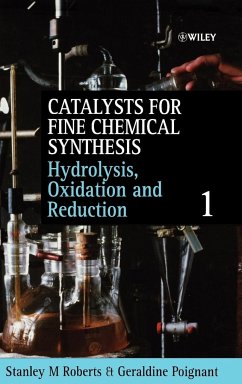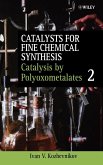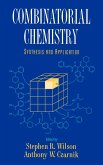Catalysts are increasingly used by chemists engaged in fine chemical synthesis within both industry and academia. Today, there exists a huge choice of high-tech catalysts, which add enormously to the repertoire of synthetic possibilities. However, catalysts are occasionally capricious, sometimes difficult to use and almost always require both skill and experience in order to achieve optimal results. This series aims to be a practical help for advanced undergraduate, graduate and postgraduate students, as well as experienced chemists in industry and academia working in organic and organometallic synthesis.
The series features:
_ Tested and validated procedures.
_ Authoritative reviews on classes of catalysts.
_ Assessments of all types of catalysts.
_ Expertise from the Leverhulme Centre for Innovative Catalysis, Liverpool, UK.
The review section in the first volume of the series contains a report by Stanley M. Roberts on the integration of biotransformations into the catalyst portfolio.
The procedure section contains a wide variety of synthetic protocols, such as epoxidations of unsaturated ketones and esters, asymmetric reductions of carbon-oxygen double bonds, asymmetric hydrogenations of carbon-carbon double bonds and other types of reaction. The featured catalysts include a wide range of different materials such as poly-D-leucine, D-fructose-based dioxiranes, oxaborolidine borane, some important titanium and ruthenium complexes as well as baker's yeast. For each reaction there are one or several detailed protocols on how to prepare and employ the various catalysts.
The series features:
_ Tested and validated procedures.
_ Authoritative reviews on classes of catalysts.
_ Assessments of all types of catalysts.
_ Expertise from the Leverhulme Centre for Innovative Catalysis, Liverpool, UK.
The review section in the first volume of the series contains a report by Stanley M. Roberts on the integration of biotransformations into the catalyst portfolio.
The procedure section contains a wide variety of synthetic protocols, such as epoxidations of unsaturated ketones and esters, asymmetric reductions of carbon-oxygen double bonds, asymmetric hydrogenations of carbon-carbon double bonds and other types of reaction. The featured catalysts include a wide range of different materials such as poly-D-leucine, D-fructose-based dioxiranes, oxaborolidine borane, some important titanium and ruthenium complexes as well as baker's yeast. For each reaction there are one or several detailed protocols on how to prepare and employ the various catalysts.








